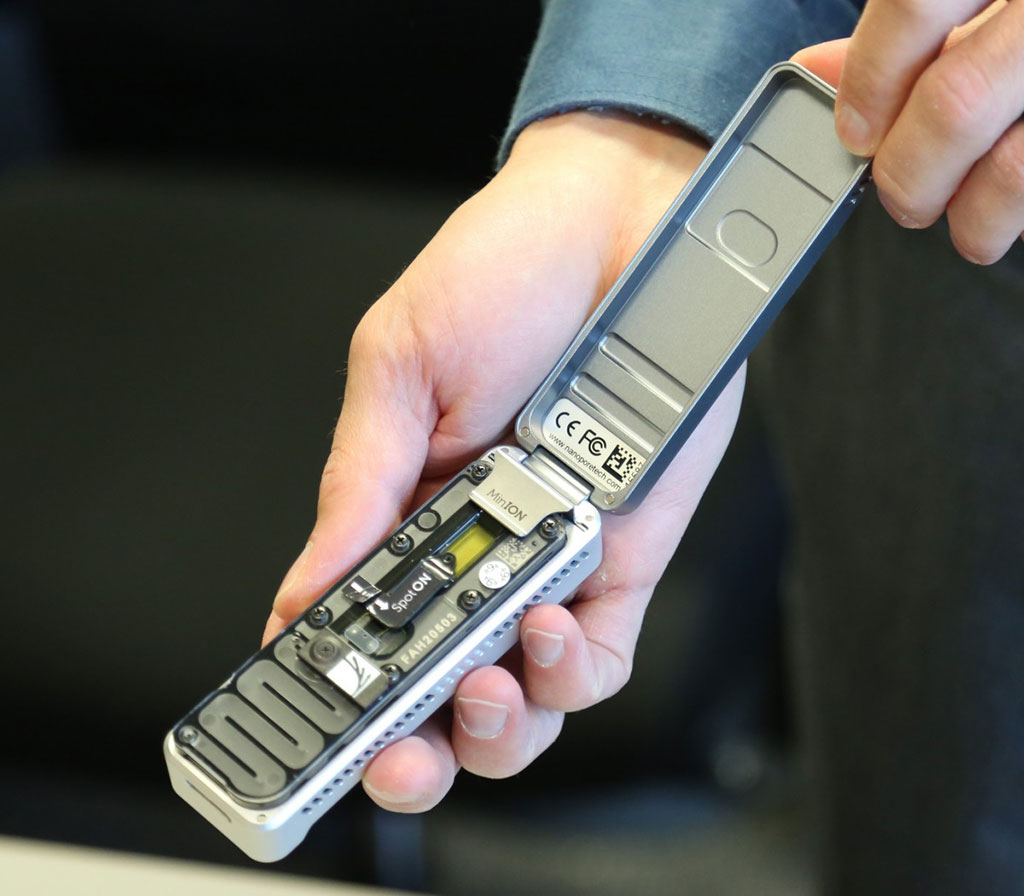New Pathogen Detection Assay Pairs Molecular Inversion Probes, Next-Generation Sequencing
Posted on 21 Feb 2022
Next-generation sequencing is rapidly finding footholds in numerous microbiological fields, including infectious disease diagnostics. Molecular inversion probe (MIP) technology can be coupled with next-generation sequencing (NGS) for targeted, multiplexed pathogen detection.
Application of molecular inversion probes (MIPs) before sequencing mitigates several of the classic issues surrounding NGS. Issues such as cost per sample, host background, and necessity for a priori knowledge for real-time PCR are mitigated through MIP multiplex amplification of several signatures at once to include virulence elements, resistance genes, and other identifying elements.

Infectious Disease specialists at the Army Medical Research Institute of Infectious Disease (Fort Detrick, MD, USA) designed a pathogen detection panel consisting of 94 probes targeting 17 viral pathogens and one parasitic organism, eight probes targeting variable 16S rRNA gene regions for bacterial taxonomic classification, as well as 71 probes targeting antibiotic resistance elements. Human clinical serum samples from suspected chikungunya virus (CHIKV) infections were analyzed and determined by using real-time RT-PCR
The Pathogen Identification Panel (PIP) was designed by using the CLC Genomics Workbench (CLC Bio, Cambridge, MA, USA) and AlleleID 7.73 (PREMIER Biosoft, Palo Alto, CA, USA). The scientists tested the ability of the MiSeq sequencer (Illumina, San Diego, CA, USA) and the MinIon sequencer (Oxford Nanopore Technologies [ONT], Oxford Science Park, UK) to sequence small amplicons originating from this panel for the identification of pathogens in complex matrices.
The investigators reported that Illumina sequencing did produce more reads than nanopore sequencing; the average number of reads per sample was approximately 500,000 for Illumina and 50,000 for ONT. Nevertheless, in the end, both platforms performed relatively similar in their sensitivity, specificity, and general statistics. The team did discover some nuances between the two platforms, specifically when it came to 16S taxonomic classification. Of the 31 bacterial pathogens targeted with the MIP panel and subsequently sequenced, the team found Illumina sequencing achieved a genus-level concordance of 96.7% compared to 90.3% with nanopore sequencing. While both sequencing platforms misclassified Klebsiella oxytoca as Enterobacter, nanopore sequencing also misclassified Burkholderia cepecia and Enterobacter aerogenes.
Timothy Minogue, PhD, deputy division chief of USAMRIID’s diagnostic systems division and senior author of the study, said, “The main advantage of using MIPs is the ability to multiplex. Compared with multiplex PCR, which requires different sets of primers for different target organisms, MIP enrichment uses universal primers for all amplifications, removing the PCR competition.”
The authors concluded that MIPs continue to be a valuable upfront molecular amplification technique easily adapted to ever-evolving downstream molecular technologies. The fundamental molecular aspects of MIPs, including the specificity and adaptability afforded by the linker backbone, promises this molecular technique will continue to be utilized well into the future. The study was published on January 24, 2022 in The Journal of Molecular Diagnostics.
Related Links:
Army Medical Research Institute of Infectious Disease
CLC Bio
PREMIER Biosoft
Illumina
Oxford Nanopore Technologies














